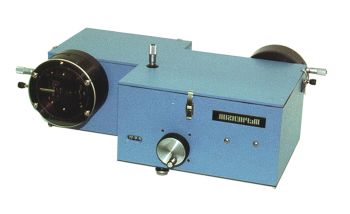
Model 275D Double Monochromator
The Model 275D is a dedicated double grating monochromator providing additive or subtractive dispersion. The 275D compact housing contains the scanning mechanism and mechanical linkage of one precision wavelength sine drive for two gratings. Wavelength control is via the 789A-3 digital scan control with a single motor.The optically and mechanically coupled modified Seya-Namioka systems are equipped with aberration corrected concave holographic gratings. Spectrally agile, the model 275D features all first surface optics for the best UV-Vis-NIR response. Double monochromators are used for a variety of applications that require extremely low levels of scattered or stray light.
| Optical Design | Aberration Corrected Concave Grating |
| Focal Length | (2X) 200 mm |
| Aperture Ratio | f/4.2 |
| Wavelength Range | 185 - 1000 nm |
| Wavelength Accuracy | ± 0.06 nm Vis (measured)
± 0.5 nm UV-Vis-IR |
| Wavelength Reproducibility | ± 0.05 nm UV-Vis-IR (measured) |
| Resolution | 0.15-nm |
| Slits | Continuously variable micrometer actuated width 0.01 to 4 mm, height settings from 2 to 20 mm |
| Bandpass | 0.15 - 16 nm, varies with slit width |
| Stray Light | 6.4 x 10-4 (UV NPL procedure)
5.0 x 10-4 (UV-Vis NPL procedure) 1.3 x 10-6, 10 nm from 632.8 nm (100 um slits) |